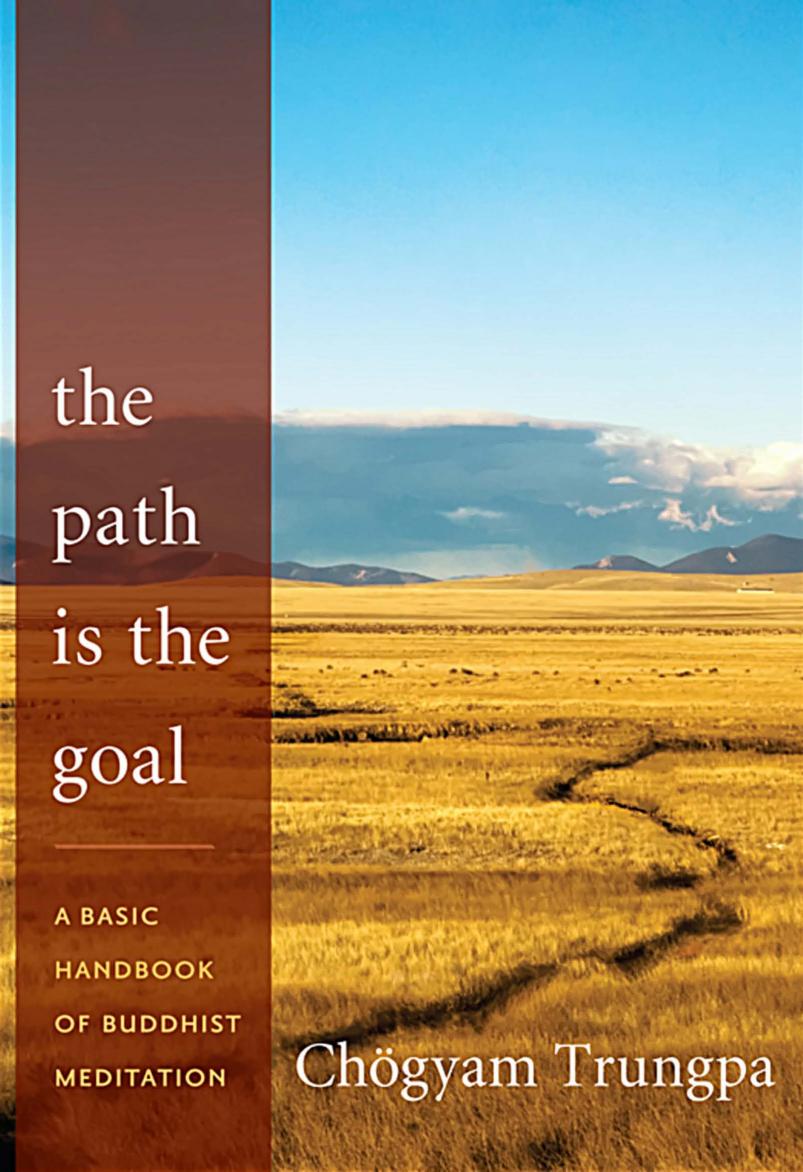The Path Is the Goal: A Basic Handbook of Buddhist Meditation by Chogyam Trungpa

Author:Chogyam Trungpa
Language: eng
Format: azw3, epub, pdf
Publisher: Shambhala Publications
Published: 2011-05-10T00:00:00+00:00
4
Boredom—Full or Empty?
One of the points of basic vipashyana practice is developing what is known as the knowledge of egolessness. That is to say that the awareness that develops through the vipashyana experience brings nonexistence of yourself. And because you develop an understanding of the nonexistence of yourself, therefore you are freer to relate with the phenomenal world—the climate, atmosphere, or environment we have been talking about.
Unless there is no basic center, one cannot develop the vipashyana experience. On the practical level, this means that vipashyana is experiencing a sense of the environment, a sense of space, as the meditator practices. This is called awareness as opposed to mindfulness. Mindfulness is very detailed and very direct, but awareness is something panoramic, open. Even in following the breathing techniques of mindfulness of breathing, you are aware not only of the breathing but also of the environment you have created around the breath.
As far as dealing with heavy-handed thoughts, emotions, is concerned, there is no way of destroying or getting over them unless you see the reference point that is with them. To begin with, seeing this takes the form of awareness of the atmosphere or environment. If you are already aware of the atmosphere beforehand, then there is a possibility that you might have a less intense relationship with your heavy-handed thoughts. That is one of the basic points.
Once you are aware of the atmosphere, you begin to realize that thoughts are no big deal. Thoughts can just be allowed to diffuse into the atmosphere. This kind of atmosphere that we are talking about is, in any case, an ongoing experience that happens to us in our lives. But sometimes we find we are so wrapped up in our little game, our little manipulation, that we miss the totality. That is why it is necessary for students to begin with shamatha—so that they can see the details of such an eruption, such a manipulation, the details of the game that goes on. Then beyond that, having established some kind of relationship with that already, they begin to see the basic totality.
Thus vipashyana is understanding the whole thing. You might ask, “What is this ‘whole thing’?” Well, it’s not particularly anything, really. This “whole thing” is the accommodator of all the activities that are taking place. It is the basic accommodation, which usually comes in the form of boredom, as far as the practitioner is concerned. The practitioner is looking for something to fill the gap, particularly in the sitting practice of vipashyana meditation, where the quality of nonhappening becomes very boring. Then you might get agitated by the boredom, which is the way of filling it up with some activities.
So in this case, the background is boredom. There are different types of boredom that we usually experience. Insecurity, lack of excitement, being idle, nothing happening. In this case, in vipashyana, the boredom we are talking about is a sense of being idle, and this is unconditional boredom. The experience of vipashyana awareness has a quality of all-pervasive thick cream.
Download
The Path Is the Goal: A Basic Handbook of Buddhist Meditation by Chogyam Trungpa.epub
The Path Is the Goal: A Basic Handbook of Buddhist Meditation by Chogyam Trungpa.pdf
This site does not store any files on its server. We only index and link to content provided by other sites. Please contact the content providers to delete copyright contents if any and email us, we'll remove relevant links or contents immediately.
| Clergy | Devotionals |
| Faith | Inspirational |
| Meditations | Monasticism & Asceticism |
| Prayer | Prayerbooks |
| Ritual | Sermons |
The Secret Power of Speaking God's Word by Joyce Meyer(2969)
More Language of Letting Go: 366 New Daily Meditations by Melody Beattie(2966)
The Holy Spirit by Billy Graham(2892)
To Light a Sacred Flame by Silver RavenWolf(2767)
Tuesdays With Morrie by Mitch Albom(2685)
The Lost Art of Good Conversation by Sakyong Mipham(2576)
The Traveler's Gift by Andy Andrews(2409)
Kundalini by Gopi Krishna(2136)
A Kingsbury Collection by Karen Kingsbury(2059)
Angels of God: The Bible, the Church and the Heavenly Hosts by Mike Aquilina(1932)
Finding Chika by Mitch Albom(1926)
Anxious for Nothing by Max Lucado(1910)
Angels by Billy Graham(1886)
As a Man Thinketh by James Allen(1861)
Curse Tablets and Binding Spells from the Ancient World by Gager John G.;(1837)
The Yoga of Jesus: Understanding the Hidden Teachings of the Gospels by Paramahansa Yogananda(1803)
Barking to the Choir by Gregory Boyle(1786)
Autobiography of a Yogi (Complete Edition) by Yogananda Paramahansa(1774)
How To Be Born Again by Billy Graham(1730)
